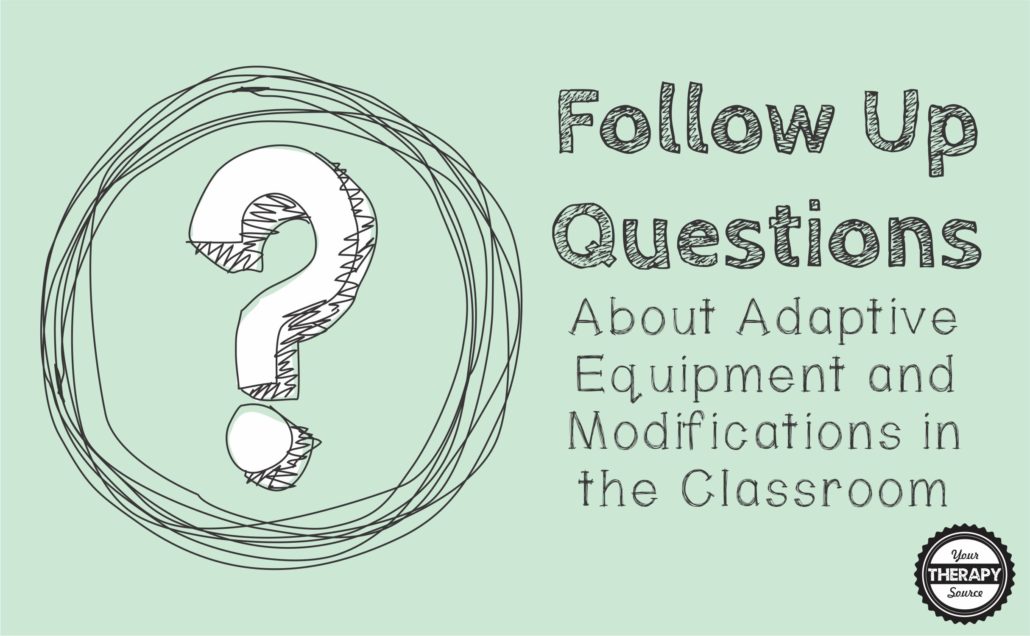Follow Up Questions about Modifications and Adaptive Equipment in the Classroom
Once a piece of adaptive equipment or modification is put in place to use with a student, therapists need to follow up frequently. Whether the adaptive equipment is a pencil grip, standing frame or weighted vest, on going assessment is needed. Have you seen modifications recommended ie sensory break and it never gets carried out? Here are 5 follow up questions to answer after implementing adaptive equipment or modification use:
1. Is the equipment or modification even being done at all? May sound ridiculous but we all have seen many pieces of adaptive equipment gather dust or IEP recommendations that just get rubber stamped year after year.
2. Is it being used when it was suggested for use? For example, perhaps special adaptive seating was recommended for seat work but it is being used during floor time on the rug.
3. Is the tool or modification suiting the needs of the student? Once the equipment has been used, make sure is it helping the student to accomplish a functional goal. If you give the student a pencil grip to encourage a functional grasp, it should not be used for a chewy or a projectile.
4. Does the equipment or modification need to be modified in any way? If the tool is not accomplishing the task, can it be tweaked or does a different modification need to be put into place. Children grow very quickly, always recheck for sizing.
5. Is the student comfortable using the equipment or modification? Check to make sure that the student agrees with using the equipment. If the student is not on board with using it, the equipment will not be used. Also, is it truly comfortable to use the equipment? Check for fatigue, skin breakdown, pain level, etc. to ensure comfort and a pain free experience.
6. Is the student as independent as possible with the equipment or modification? Sometimes adults can provide too much help without even realizing it. The goal is for the student to be as independent as possible.
Modifications and Interventions for School – Reporting Forms
This book, in printed or electronic format, provides pediatric therapists with over 60, reproducible reporting forms with hundreds of suggested modifications and interventions for students. Track progress once modifications are put into action. Find out more information.




